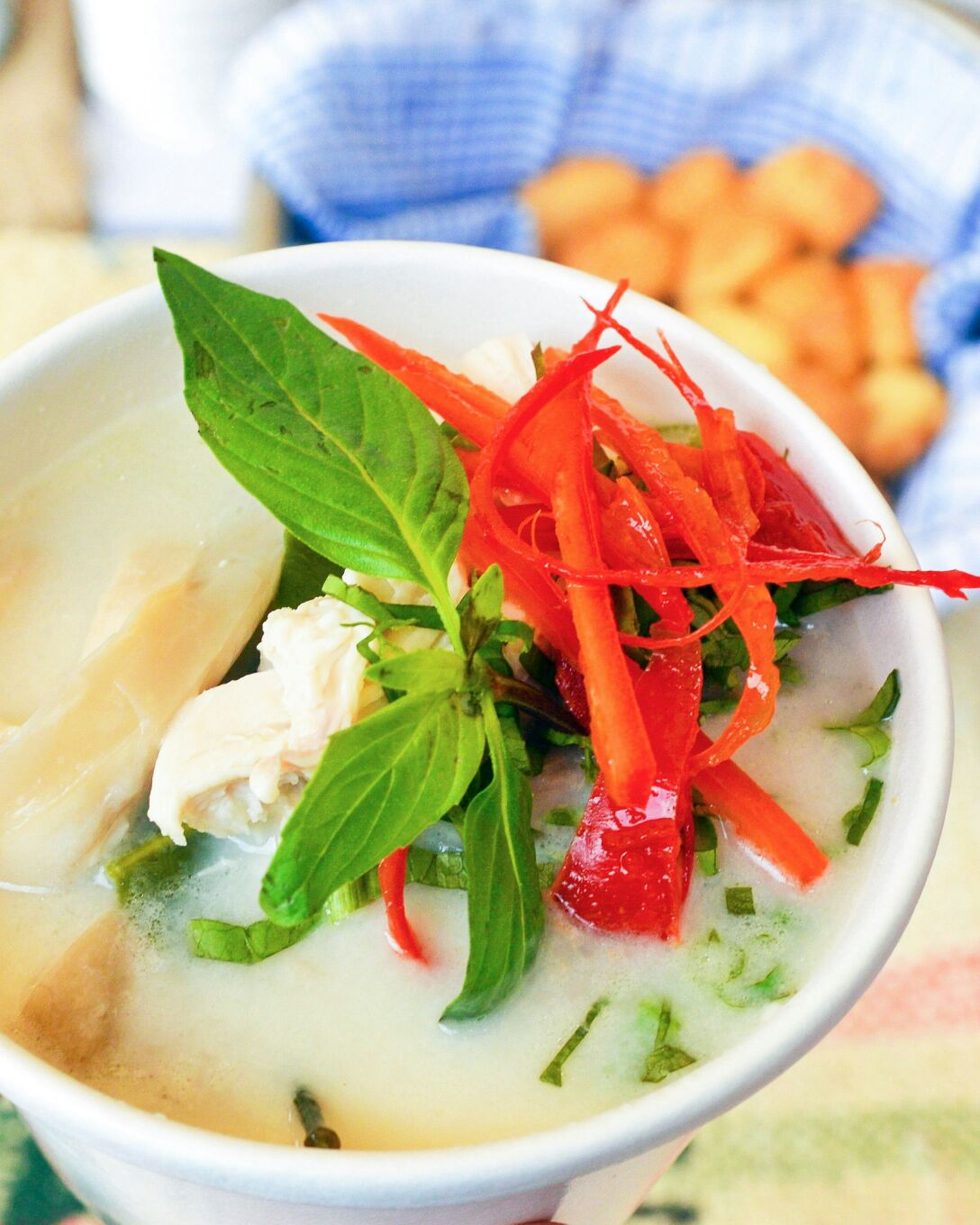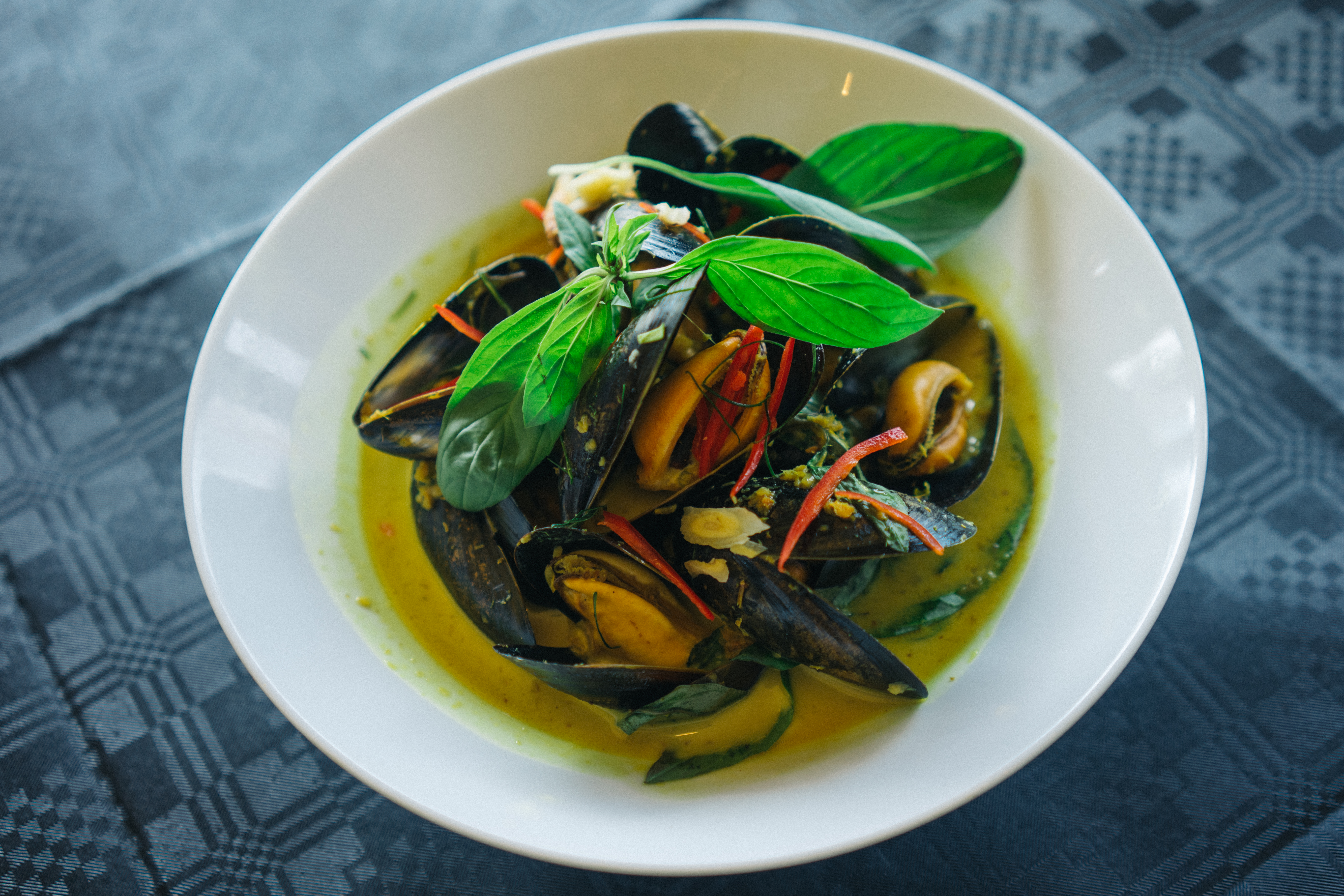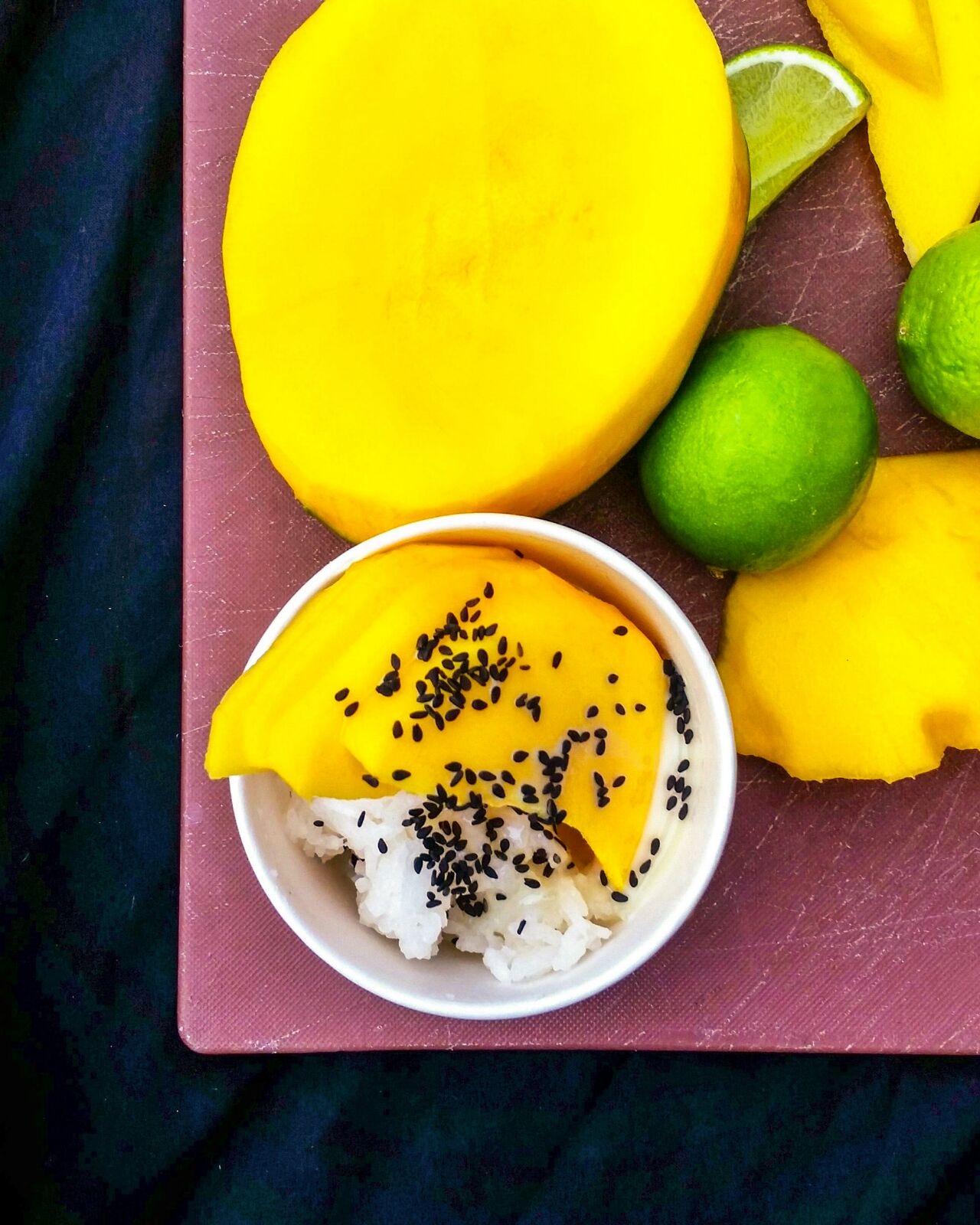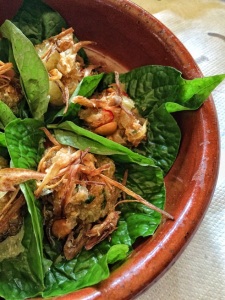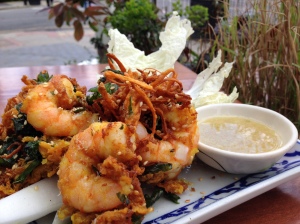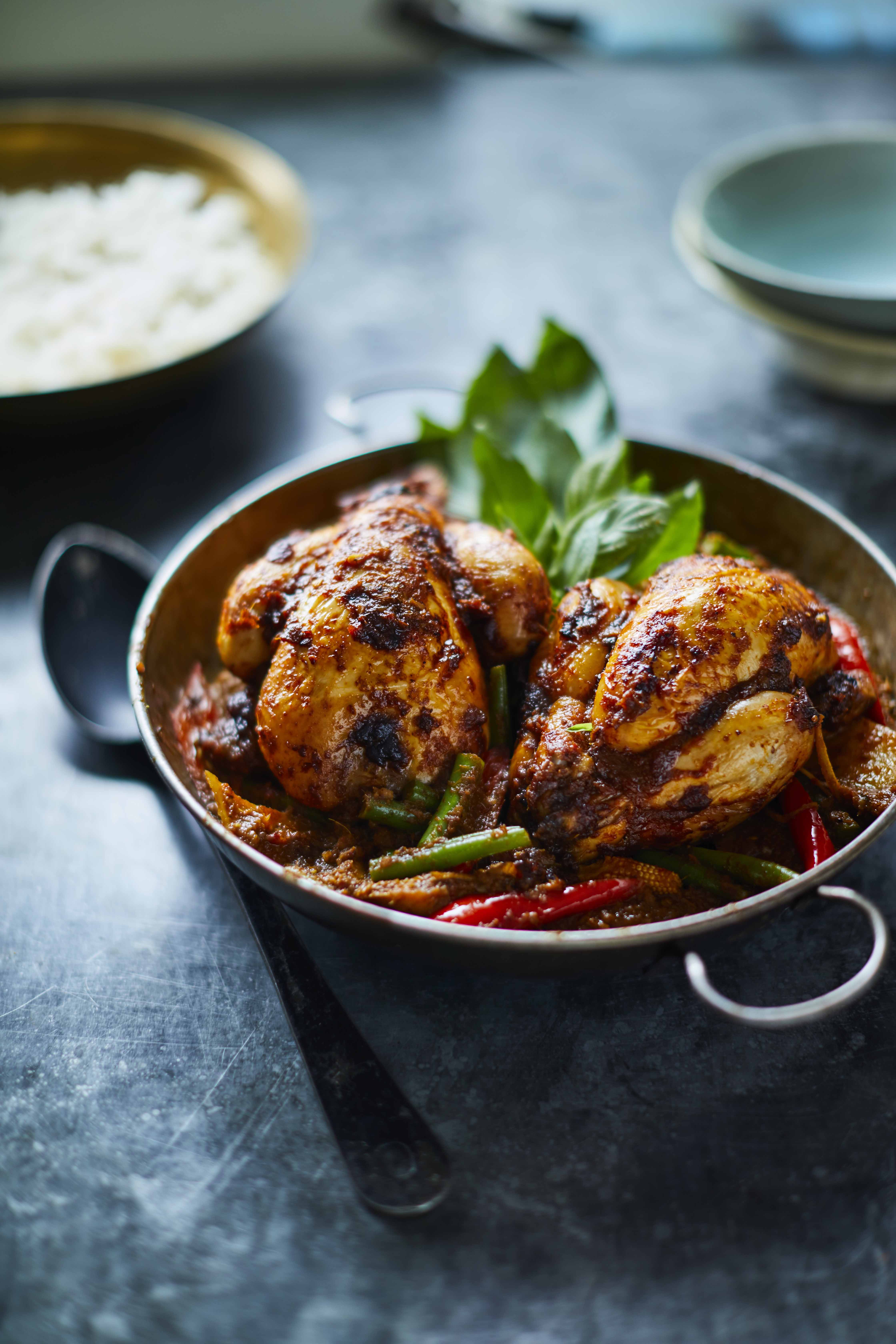 This one has been a strong favourite from customers since even the pop-up days of Farang, the whole roast chicken screams ‘roast dinner’, when marinated in a spicy red curry it screams even louder ‘Farang’. Sharing food and enjoying the experience ‘family style’ is how it’s done in Thailand and this dish is built to share so get stuck in. I’ve always used baby chicken in the restaurant to make this, which are perfect for sharing between two, however it works deliciously with larger chickens if you adjust the cooking times to suit. It’s a simple way to infuse the whole chicken with the flavours of the red curry. Serve this carved up in front of friends or family with bowls of rice and no one will be disappointed. Like in this recipe, you can cook the chicken straight away however for a fuller affect, leave the chicken marinating in red curry paste overnight before roasting.
This one has been a strong favourite from customers since even the pop-up days of Farang, the whole roast chicken screams ‘roast dinner’, when marinated in a spicy red curry it screams even louder ‘Farang’. Sharing food and enjoying the experience ‘family style’ is how it’s done in Thailand and this dish is built to share so get stuck in. I’ve always used baby chicken in the restaurant to make this, which are perfect for sharing between two, however it works deliciously with larger chickens if you adjust the cooking times to suit. It’s a simple way to infuse the whole chicken with the flavours of the red curry. Serve this carved up in front of friends or family with bowls of rice and no one will be disappointed. Like in this recipe, you can cook the chicken straight away however for a fuller affect, leave the chicken marinating in red curry paste overnight before roasting.
Serves 2 / GF
1 baby chicken, roughly 250-300g
200g, red curry paste (for best results make it yourself, recipe in my book ‘Cook Thai’ 😉
1 tablespoon palm sugar
50g, prawns, shells, heads removed and de-veined, minced using a meat cleaver, keep the heads and prawns to one side
20g, baby corn, sliced into thin roll-cuts
20g, white daikon, peeled and sliced into thin roll-cuts and braised in water until (optional)
2, long red chillies, sliced into roll cuts
2, long green chillies, sliced into roll cuts
20g, green beans, topped and tailed, cut into 2cm long chunks
250ml, prawn stock, the recipe tells you how to make this
150ml, coconut oil, crack (vegetable oil can be used instead but is not as tasty)
200ml, coconut cream
2 tablespoons, wild ginger, krachai, peeled and thinly sliced (regular ginger will work too)
10g, Thai basil, picked
10g, coriander, washed and picked
2-3 tablespoons, fish sauce, to taste
1 teaspoon, sea salt
Firstly, get all the prawn heads that you collected and add them to 300ml of water. Bring this to the boil and then turn down to a simmer, make sure to skim the scum off the surface of the water, simmer for 20 minutes and then strain to produce a light prawn stock. Meanwhile heat the coconut oil in a wok, when bubbling, add the red curry paste and keep stirring and scraping regularly until paste begins to split like scrambled eggs. You will also notice that the smell of the ingredients changes from raw, to fragrant. I find as you cook out curry pastes you can smell each ingredient cooking at different times, I assume this is based on the water content of each vegetable, eventually the smell becomes one which is a clear sign that it is ready. At this point add the palm sugar and continue to scrape and cook for a further minute until the paste has darkened slightly, then add 2 tablespoons of fish sauce and allow to cook into the paste for one minute, don’t add too much as it is strong and you can always add, but never take away.
Now it’s time to let the curry out. Add 200ml of the prawn stock and 100ml of the coconut cream. Now remove half of this curry paste and allow to cool, once cool coat the chicken in the seasoned and cooked curry paste thoroughly, at this stage you can leave the chicken to marinate for a few hours, ideally overnight or you can cook straight away. Pre-heat an oven to 220 degrees centigrade and proceed to roast the chicken for 35-40 minutes until the skin is crisping and the curry paste marinade has become slightly charred and smells delicious. Check that the juices are running clear and that the chicken is hot throughout before removing from the oven. Once cooked, remove from the oven and allow to rest for 10 minutes before serving.
In the meantime, return to the rest of the cooked-out curry paste. Bring this back to a simmer and then add the daikon, green beans and baby corn. Stir to combine and then cover and bring to a simmer, cook out for around five minutes until all vegetables are cooked. At this point the curry would have thickened a little, so finish off the remaining prawn stock and coconut cream and add the minced prawns. Cook out for 3 minutes until all prawns are pink in colour and cooked throughout. Next add Thai basil, green and red chilli roll-cuts, fish sauce to taste and sliced krachai, then fold these ingredients in and serve immediately. The curry should be spicy, creamy, aromatic, sweet, fishy and salty all at the same time, adjust in the direction that suits you.
Serve the chicken whole with the prawn and vegetable curry over the top and if you like, a few sprigs of Thai basil on top for decoration, serve with steamed jasmine rice.
Cheers for reading,





